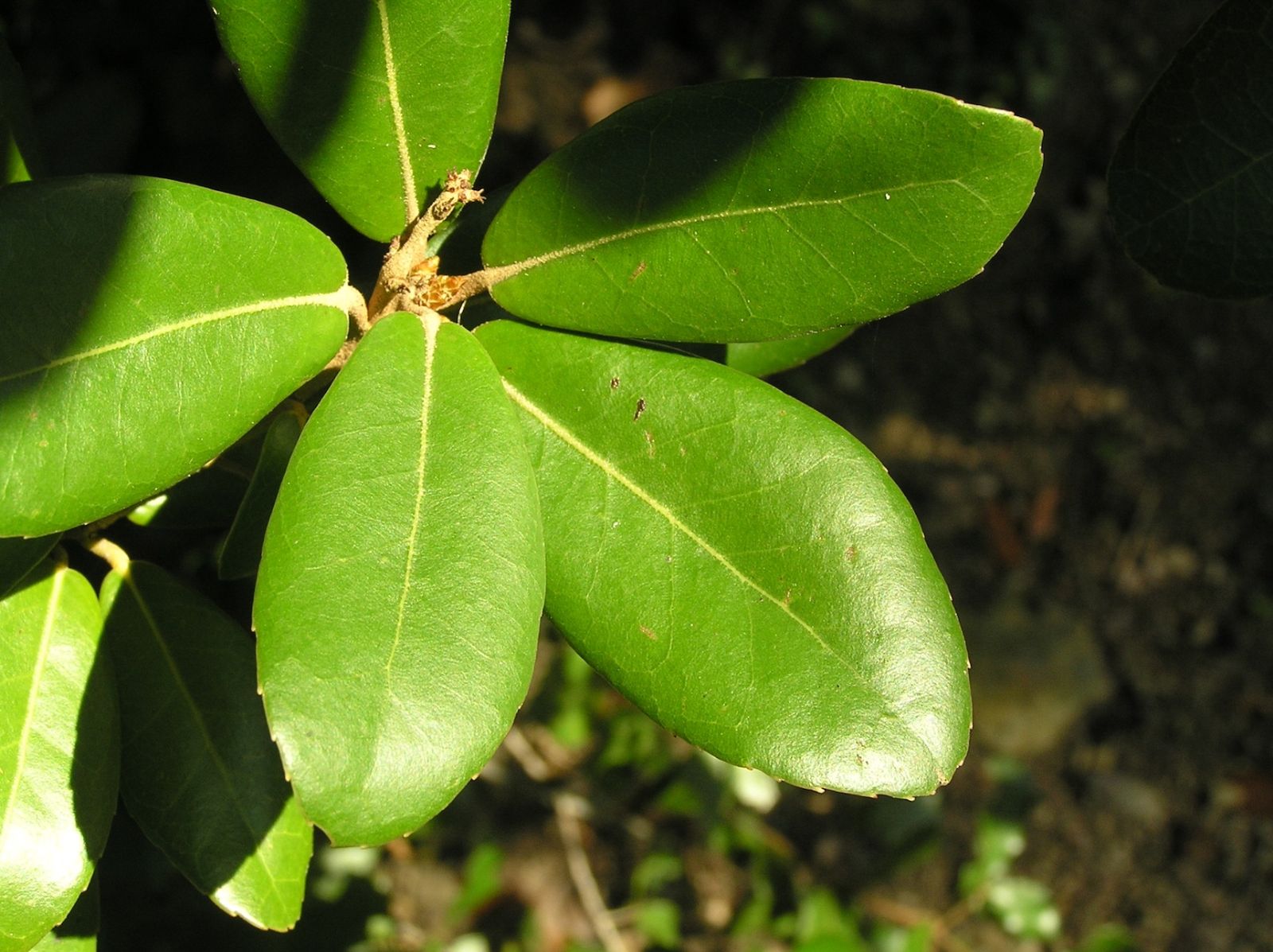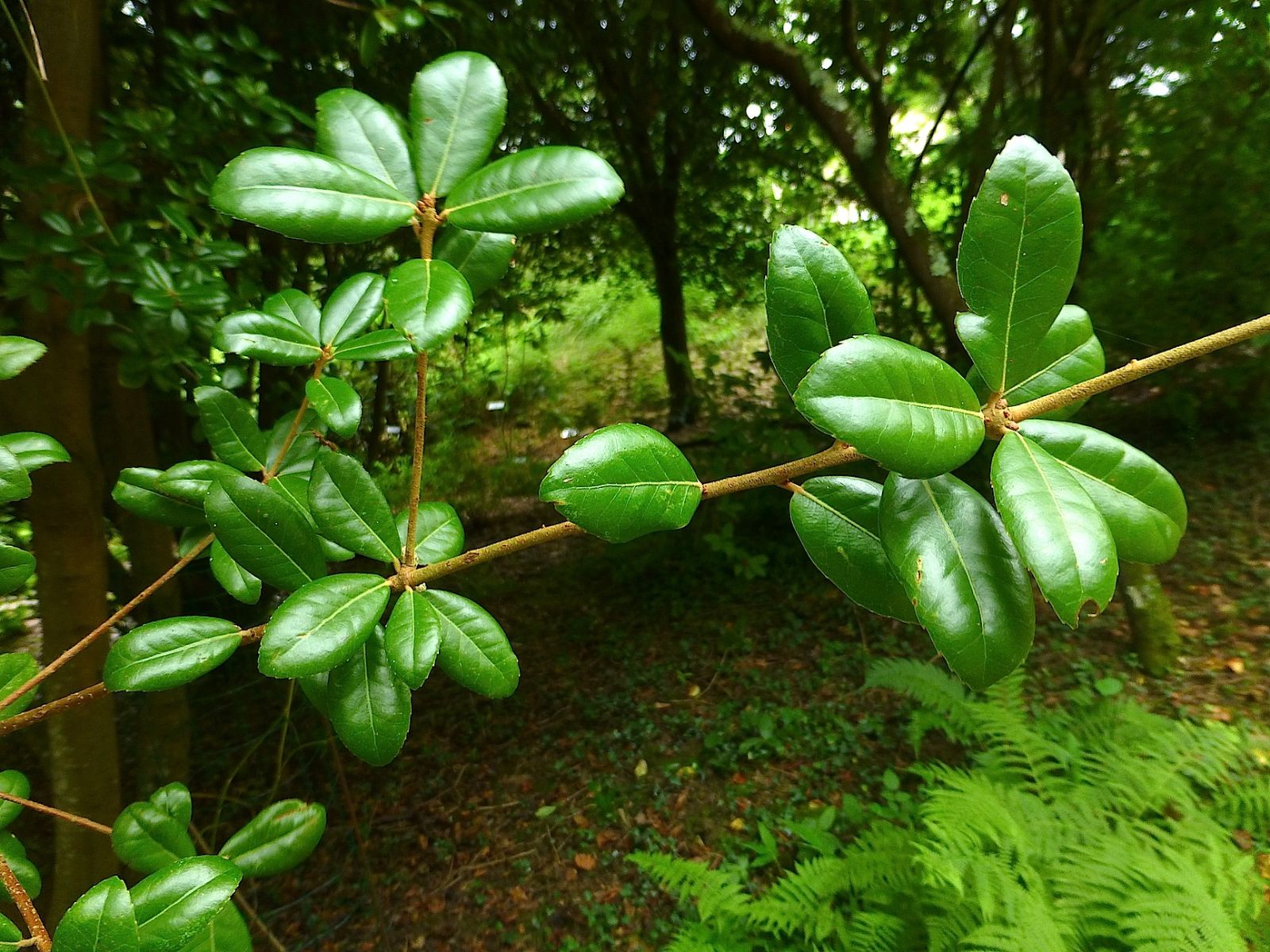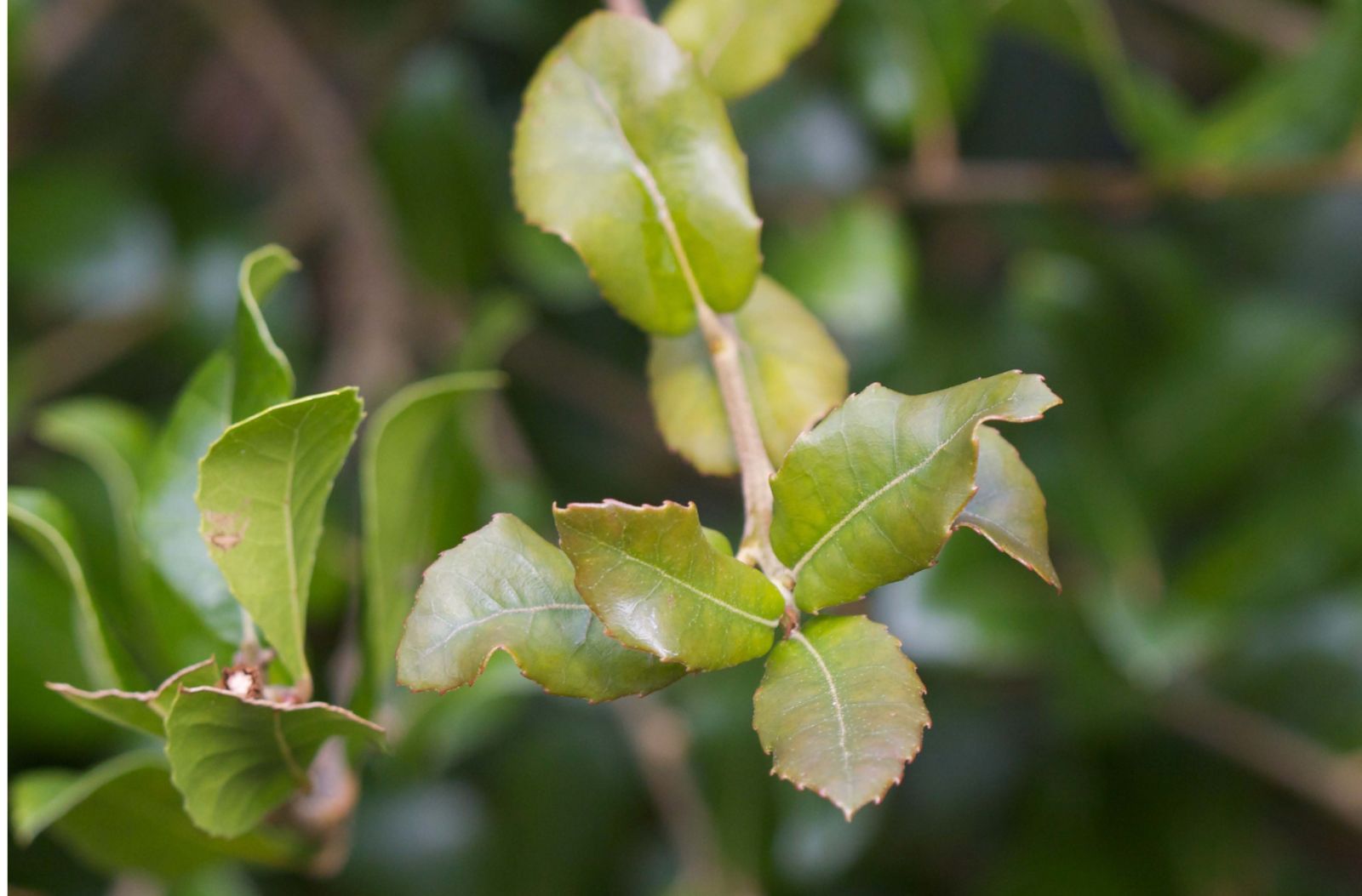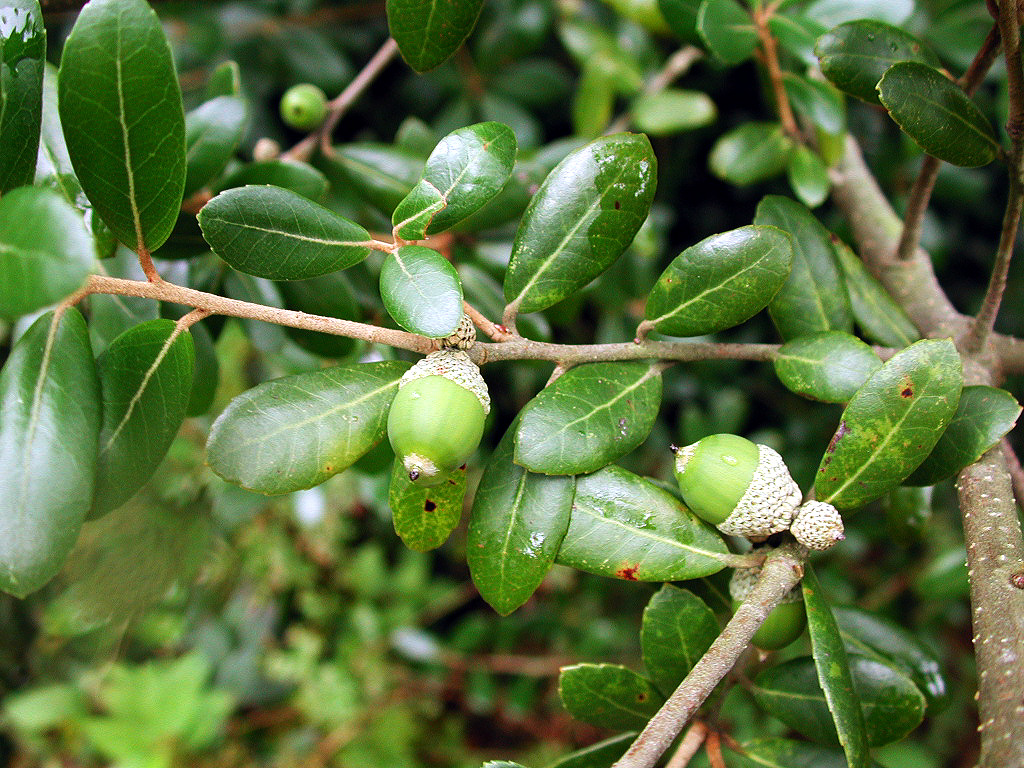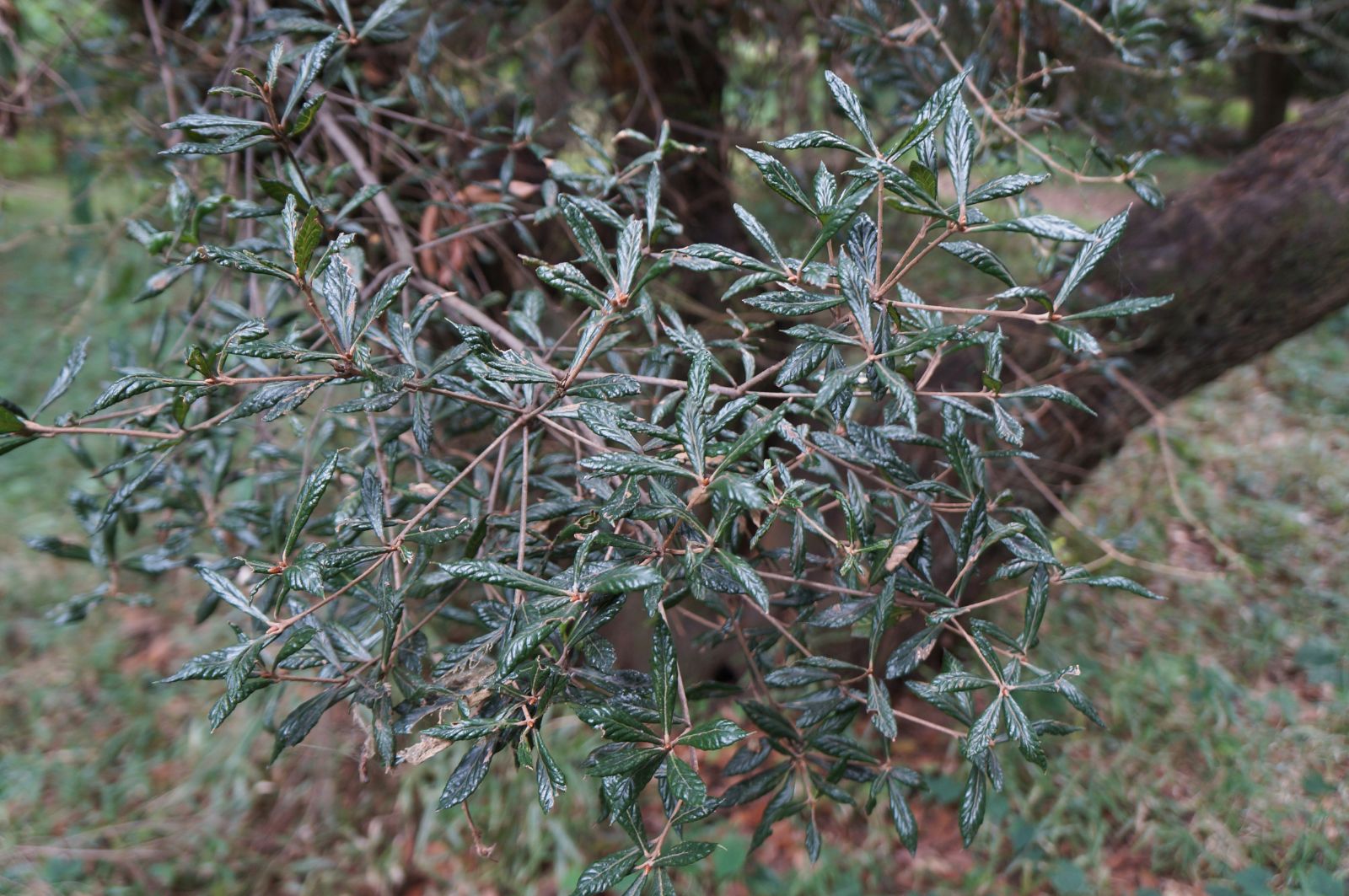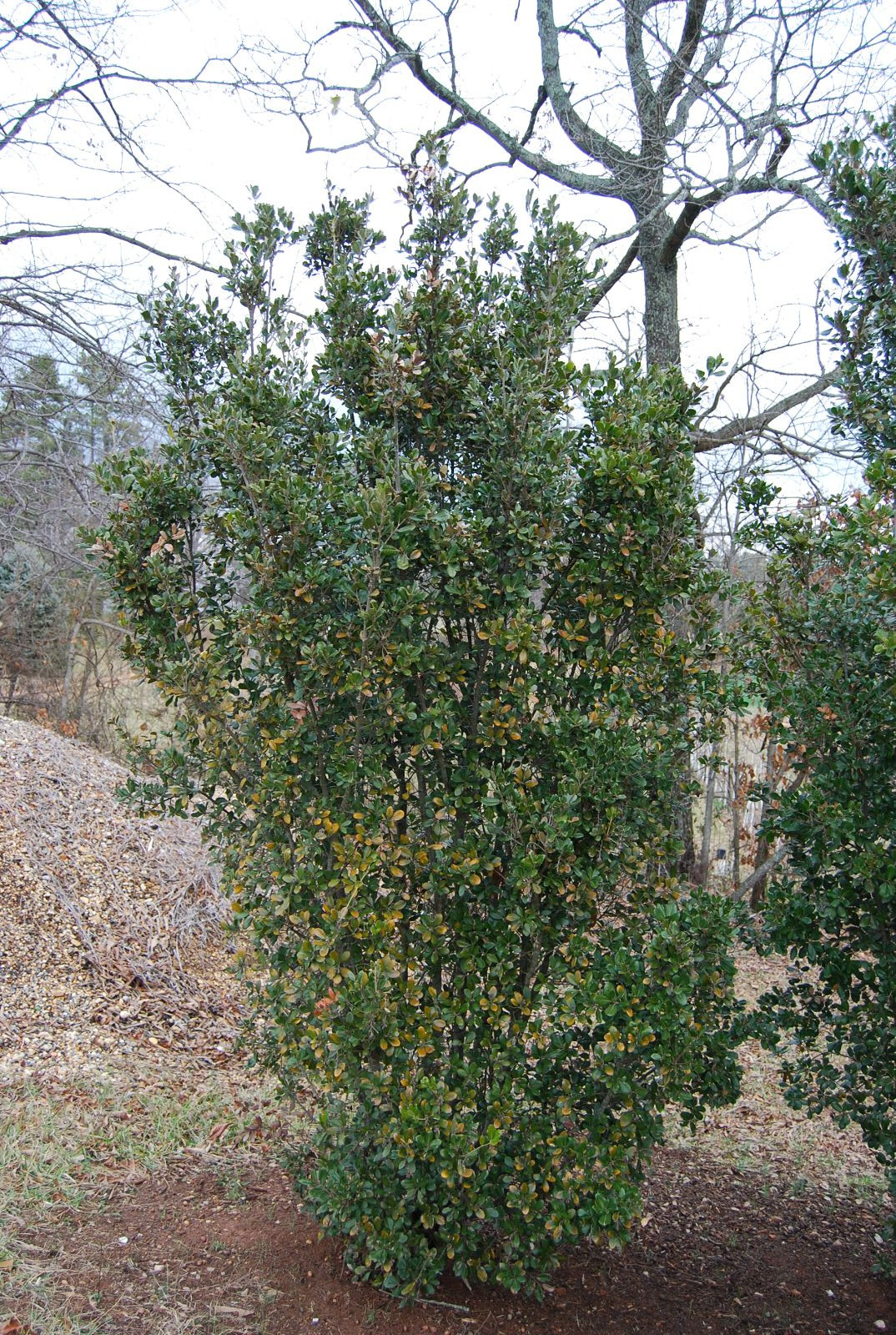Quercus phillyreoides
Sponsor
Kindly sponsored by
The Trees and Shrubs Online Oak Consortium
Credits
Allen Coombes & Roderick Cameron (2021)
Recommended citation
Coombes, A. & Cameron, R. (2021), 'Quercus phillyreoides' from the website Trees and Shrubs Online (treesandshrubsonline.
Genus
- Quercus
- Subgen. Cerris, Sect. Ilex
Common Names
- Ubame Oak
- Ubamegashi
- wu gang li
Synonyms
- Quercus fokienensis Nakai
- Quercus wrightii Nakai
- Quercus tinfanensis A. Camus
- Quercus singuliflora (H. Lév.) A. Camus
- Quercus fooningensis Hu & W.C. Cheng
- Quercus myricifolia Hu & W.C. Cheng
- Maesa singuliflora H. Lév.
Infraspecifics
Other taxa in genus
- Quercus acerifolia
- Quercus acherdophylla
- Quercus acrodonta
- Quercus acuta
- Quercus acutifolia
- Quercus acutissima
- Quercus afares
- Quercus affinis
- Quercus agrifolia
- Quercus alba
- Quercus aliena
- Quercus alnifolia
- Quercus aquifolioides
- Quercus arizonica
- Quercus arkansana
- Quercus aucheri
- Quercus augustini
- Quercus austrina
- Quercus × auzendei
- Quercus baloot
- Quercus bambusifolia
- Quercus baronii
- Quercus bicolor
- Quercus brantii
- Quercus buckleyi
- Quercus canariensis
- Quercus canbyi
- Quercus candicans
- Quercus castanea
- Quercus castaneifolia
- Quercus cerris
- Quercus chenii
- Quercus chrysolepis
- Quercus coccifera
- Quercus cocciferoides
- Quercus coccinea
- Quercus conspersa
- Quercus crassifolia
- Quercus crassipes
- Quercus delavayi
- Quercus dentata
- Quercus deserticola
- Quercus dolicholepis
- Quercus douglasii
- Quercus dumosa
- Quercus durifolia
- Quercus eduardii
- Quercus ellipsoidalis
- Quercus emoryi
- Quercus engelmannii
- Quercus engleriana
- Quercus euboica
- Quercus eugeniifolia
- Quercus fabri
- Quercus faginea
- Quercus falcata
- Quercus floribunda
- Quercus frainetto
- Quercus franchetii
- Quercus fruticosa
- Quercus fusiformis
- Quercus gambelii
- Quercus garryana
- Quercus geminata
- Quercus georgiana
- Quercus germana
- Quercus gilliana
- Quercus gilva
- Quercus glabrescens
- Quercus glauca
- Quercus graciliformis
- Quercus gravesii
- Quercus griffithii
- Quercus grisea
- Quercus guyavifolia
- Quercus hartwissiana
- Quercus hemisphaerica
- Quercus × hispanica
- Quercus hondae
- Quercus hypargyrea
- Quercus hypoleucoides
- Quercus ilex
- Quercus ilicifolia
- Quercus imbricaria
- Quercus incana
- Quercus infectoria
- Quercus insignis
- Quercus ithaburensis
- Quercus kelloggii
- Quercus × kewensis
- Quercus kiukiangensis
- Quercus laceyi
- Quercus laevis
- Quercus lamellosa
- Quercus lanata
- Quercus lancifolia
- Quercus laurifolia
- Quercus laurina
- Quercus × leana
- Quercus leucotrichophora
- Quercus × libanerris
- Quercus libani
- Quercus lobata
- Quercus lobbii
- Quercus lodicosa
- Quercus longinux
- Quercus longispica
- Quercus look
- Quercus × ludoviciana
- Quercus macranthera
- Quercus macrocalyx
- Quercus macrocarpa
- Quercus macrolepis
- Quercus marilandica
- Quercus mexicana
- Quercus michauxii
- Quercus mongolica
- Quercus monimotricha
- Quercus montana
- Quercus morii
- Quercus muehlenbergii
- Quercus myrsinifolia
- Quercus myrtifolia
- Quercus nigra
- Quercus × numidica
- Quercus oblongifolia
- Quercus obtusata
- Quercus oglethorpensis
- Quercus oxyodon
- Quercus pagoda
- Quercus palmeri
- Quercus palustris
- Quercus pannosa
- Quercus parvula
- Quercus petraea
- Quercus phellos
- Quercus planipocula
- Quercus poilanei
- Quercus polymorpha
- Quercus pontica
- Quercus prinoides
- Quercus pubescens
- Quercus pyrenaica
- Quercus rehderiana
- Quercus reticulata
- Quercus robur
- Quercus rotundifolia
- Quercus rubra
- Quercus rugosa
- Quercus rysophylla
- Quercus sadleriana
- Quercus salicina
- Quercus sartorii
- Quercus × schneideri
- Quercus schottkyana
- Quercus semecarpifolia
- Quercus senescens
- Quercus serrata
- Quercus sessilifolia
- Quercus setulosa
- Quercus shumardii
- Quercus sinuata
- Quercus spinosa
- Quercus stellata
- Quercus stenophylloides
- Quercus suber
- Quercus subspathulata
- Quercus tarokoensis
- Quercus tatakaensis
- Quercus texana
- Quercus tomentella
- Quercus trojana
- Quercus tungmaiensis
- Quercus turbinella
- Quercus × turneri
- Quercus undulata
- Quercus utahensis
- Quercus utilis
- Quercus uxoris
- Quercus variabilis
- Quercus velutina
- Quercus virginiana
- Quercus vulcanica
- Quercus warburgii
- Quercus wislizenii
- Quercus xalapensis
Shrub or tree 1–15 m tall, to 0.6 m dbh, evergreen, of dense, rounded to spreading habit. Bark dark gray or blackish brown, flaky, with superficial longitudinal fissures. Young shoots slender, grayish brown pubescent, later glabrescent. Petiole 3–5 mm, covered in brownish or tan starry tomentum; leaves grouped at the end of branches, leathery, obovate, narrowly elliptic, or narrowly ovate, 2–6(–8) cm long × 1.5–3 cm wide, glabrescent or midvein abaxially remaining pilose with age, base rounded to nearly cordate, margin glandular serrulate, apex mucronate to shortly acuminate; secondary veins 8–13 on each side of midvein; tertiary veins abaxially inconspicuous to evident but very slender. Female inflorescences 1–4 cm. Cupule cup-shaped, 6–8 mm long × 1–1.2 cm wide, enclosing one third to one half of nut, scales to 1 mm, brown, covered in white tomentum. Acorns born singly or in pairs, nut ellipsoid, 1–2 cm long × 0.5–1 cm; wide acorn scar 3–4 mm in diameter, flat or slightly raised; stylopodium c. 1 mm in diameter, easily broken. Flowers March–April, acorns ripen September–October of the following year. (Huang et al. 1999; le Hardÿ de Beaulieu & Lamant 2010).
Distribution China Anhui, Fujian, Guangdong, Guangxi, Guizhou, Henan, Hubei, Jiangxi, Shaanxi, Sichuan, Yunnan, Zhejiang Japan Honshu, Shikoku, Kyushu, Ryukyu North Korea South Korea
Habitat Mixed mesophytic forests at 300–1200 m asl.
USDA Hardiness Zone 7
Conservation status Least concern (LC)
In China, this widespread oak grows in mixed forest on calcareous soils. It is found in rocky locations on the Japanese coast where it constitutes sclerophyllous formations with other evergreens such as Euonymus japonicus, Eurya marginata, Ilex integra, I. pedunculosa, Pittosporum tobira, and Rhaphiolepis umbellata. Other associates include Juniperus rigida, Pinus thunbergii, Amelanchier asiatica, Elaeagnus pungens, Diospyros kaki, Rhus sylvestris, and Camellia japonica. It forms a small tree in forests but remains shrubby in locations with human impact (le Hardÿ de Beaulieu & Lamant 2010).
In cultivation Quercus phillyreoides is an amenable species, indifferent to pH and tolerating heavy clay and sea spray. While appreciating warm sites, it has survived temperatures of –20 °C for several days (le Hardÿ de Beaulieu & Lamant 2010). It was introduced to the British Isles in 1861 by Richard Oldham when collecting for Kew. A tree from this collection measured 8 m × 76 cm dbh in 1971, while another, planted in 1908 and probably from seed collected by E.H. Wilson in China, measured 7 m × 69 cm dbh in 1972 (Bean 1976). This species is widely cultivated and is found in collections around the world. A tree growing at Caerhays, Cornwall, is likely the tallest in the UK and Ireland, measuring 11 m × 43 cm dbh in 1984 (Tree Register 2020). It was received from Wakehurst Place in 1920 and by 1966 had reached 7 m (Williams 2014). The official UK & Ireland champion grows in Sir Harold Hillier Gardens, where it reached 11 m × 60 cm dbh in 2010 (Tree Register 2020).
In the USA Q. phillyreoides is grown at New York Botanical Garden, Scott Arboretum (Penn.), Starhill Forest Arboretum, (Ill.), UC Davis (Calif.), and University of Washington Botanic Garden (Wash.). Four plants at the US National Arboretum, Washington DC., of cultivated origin, were grown from seed collected by John Creech on Tsushima Island, Japan in 1978 (US National Arboretum 2020).
Bean (1976) spoke highly of this oak, describing the Kew specimen as ‘a handsome, cheerful bush, well clothed to the ground with shining foliage’. He also noted that on some specimens the young foliage was bronze-tinted and that the species rarely produces acorns in Britain – the same seems to apply for a tree in Grigadale Arboretum in Argentina, where despite growing vigorously and reaching 9.3 m × 37 cm dbh in 24 years, acorns are few and far between. However, fruit has ripened on trees in the Iturraran Botanical Garden, Spain (see photo below) and in Hackfalls Arboretum, New Zealand (pers. obs. 2019). According to Charles Williams (2014), it withstands a great deal of wind and salt-laden gales. In Chevithorne Barton, England, a line of clipped trees has made a fine hedge, around 20 metres long and 3 m high (J. MacEwen pers. comm. 2020).
It is commonly planted in Japanese gardens, often as a hedge or as clipped topiary. It bears a superficial resemblance to the shrubby, opposite-leaved Phillyrea latifolia, after which it is named (Coombes 2017). The epithet was originally published as phillyraeoides and some references still use this spelling. The common name in Japanese, ubamegashi, is of uncertain origin. According to le Hardÿ de Beaulieu & Lamant (2010), ubame = ‘old woman’s eyes’ (from uba = ‘old woman’ + me = ‘eye’; gashi = ‘oak’). This apparently refers to the yellowish brown colour of new leaves, but the connection with the eyes of old women is not clear. A more common theory is that the me in ubame derives from a homonym that means ‘new buds/leaves’: 芽 (new buds /leaves) and 目 (eye) are both pronounced me in Japanese. Tannin extracted from the new shoots of this oak was involved in the preparation of a black dye used in ohaguro, an ancient practice in which married women stained their teeth black (K. Tokunaga, pers. comm.).
Crispa Group
Common Names
Chirimen oak
Biwabagashi
Synonyms / alternative names
Quercus phillyreoides var. crispa Matsum.
Leaves elongated, pointed at the apex (normally blunt in the typical form), tapered at the base (normally rounded) with a conspicuously bullate upper surface and a revolute, crisped margin. It is known in Japan as Chirimen oak, named after a traditional Japanese fabric similar to crepe. The Japanese name Biwabagashi refers to the resemblance of the leaves to the Japanese Biwa (Eriobotrya japonica), although much smaller. Similar forms are known in the wild in Japan, such as in Aichi prefecture (Keiko Tokunaga, pers. comm. 2020).
Seed of this form was introduced to the USA from Saikyo University (now Kyoto Prefectural University) in Kyoto, Japan in November 1955 (PI 229890), but there are no records of plants deriving from this (Russell & Leese 1960). In Japan it is grown at Koishikawa Botanical Garden, Tokyo, where there are two trees, 7 and 12 m tall (Keiko Tokunaga, pers. comm. 2020). It is also grown at Kyoto Botanical Garden and the Nakamozu Campus of Osaka Prefecture University (see here). A plant at Arboretum Trompenburg in the Netherlands received from M. Decalut in 1997 and planted in 2003 made a bushy tree 4 m tall (Gert Fortgens, pers. comm. 2020), but photographs show that this is typical Q. phillyreoides.
'Emerald Sentinel'
A fast-growing, upright selection from the JC Raulston Arboretum, North Carolina, said to be very hardy and easy to propagate from cuttings (Hillier & Lancaster 2014), a fact that seems to worry le Hardÿ de Beaulieu & Lamant (2010), due to the phytosanitary risks of creating hedges with cloned individuals. Griffin et al. (1999) assert that the cultivar is difficult to root, reporting 18 % overall rooting in a controlled experiment – though such a percentage may be considered high for Quercus. The upright habit and fast growth rate are uncontested and are sufficient to recommend this cultivar.
It is worth noting that one of the older trees of Q. phillyreoides at Sir Harold Hillier Gardens, UK, (2.7 m in 2007) is also of upright habit. A specimen at the JC Raulston Arboretum had reached 10.5 m in 2008. (JC Raulston Arboretum 2020). Two plants of this cultivar grow at Arboretum Trompenburg in the Netherlands (Gert Fortgens pers. comm.). A plant at Sir Harold Hillier Gardens was 5.5 m × 9.1 cm diameter @ 1 m in 2020 (Barry Clarke pers. comm.).



